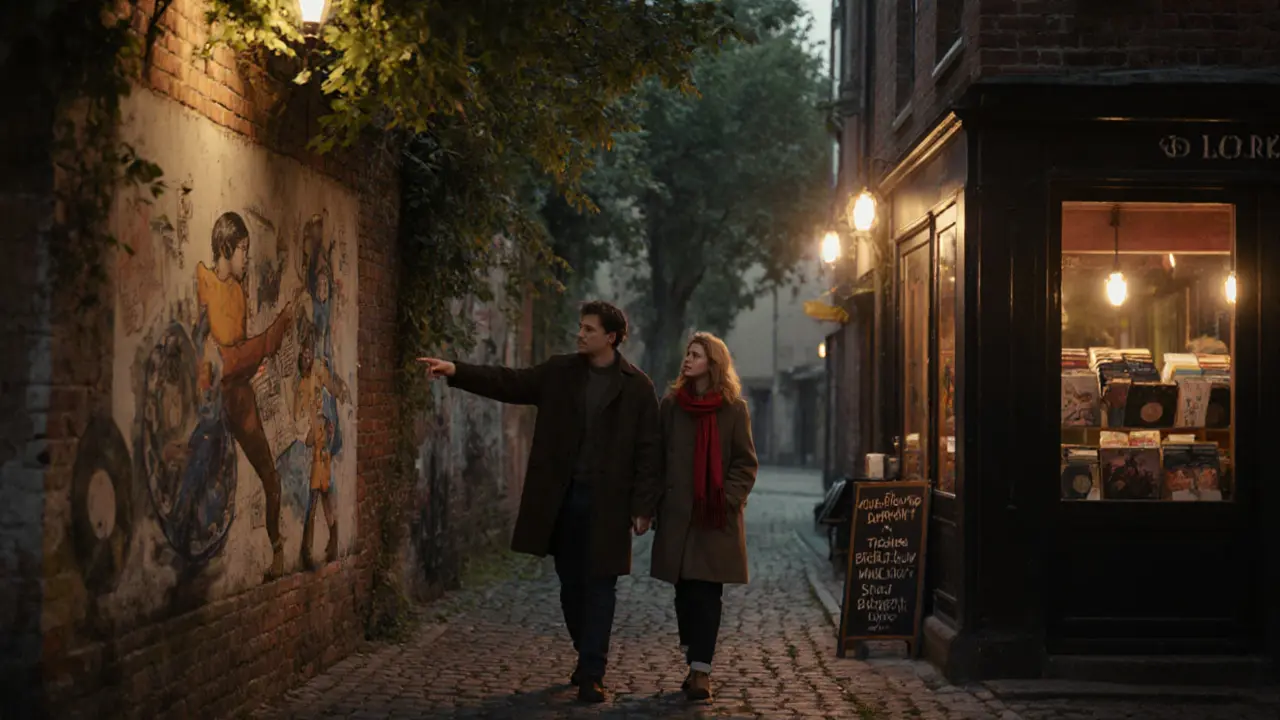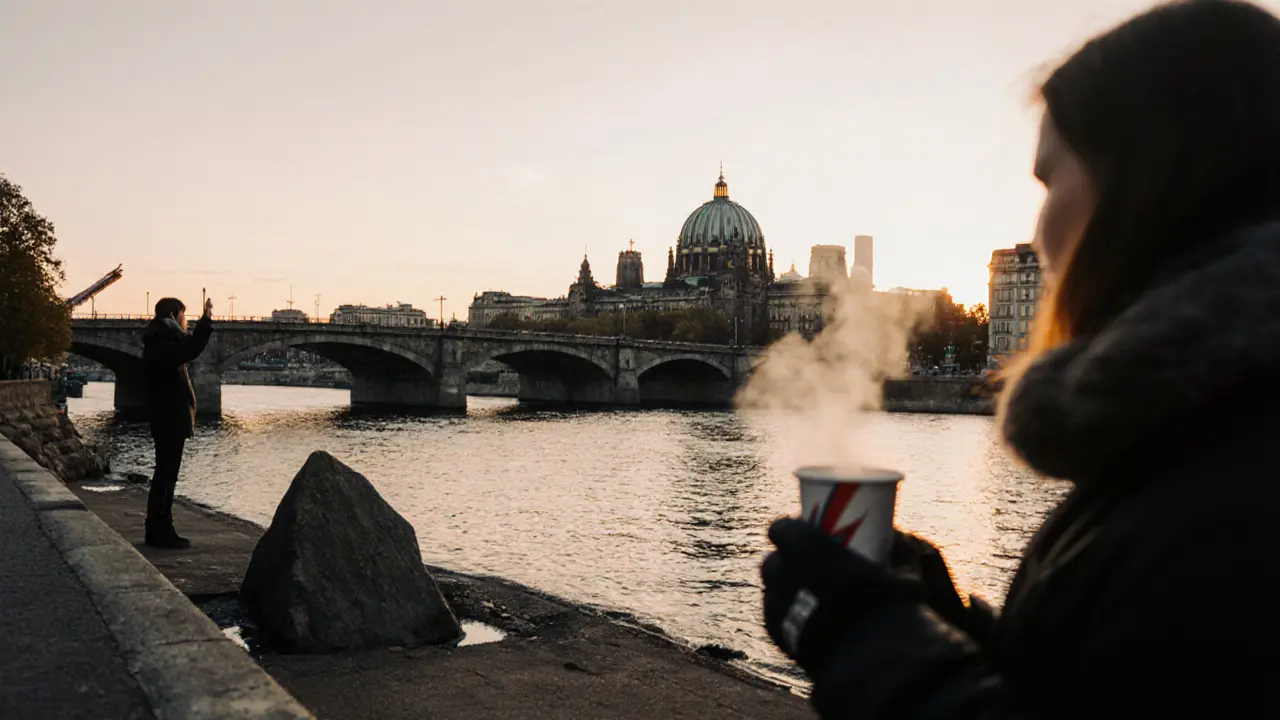Exploring Berlin's Cultural Highlights with a Sophisticated Companion

Berlin isn’t just a city of history and street art-it’s a place where culture moves at its own rhythm, and the best way to feel it isn’t by following a map, but by walking beside someone who knows its hidden corners. A sophisticated companion doesn’t just show you the Brandenburg Gate. They know which quiet café in Kreuzberg plays vinyl from 1978, where the local curators gather after gallery openings, and which alleyway leads to a secret jazz club that doesn’t appear on any tourist app.
Where Culture Meets Intimacy
Most tourists see Berlin’s museums in rushed blocks-Neue Nationalgalerie, Pergamon, East Side Gallery-then leave. But culture isn’t meant to be checked off. It’s meant to be felt. A well-connected companion understands that the real power of Berlin’s art scene lies in its context. They’ll take you to the Berlinische Galerie not just to see the Expressionist paintings, but to sit with you in the quiet courtyard afterward and explain how the war changed the way artists used color. They know the curator who left the museum to open a tiny print shop in Mitte, and they’ll introduce you to her without a single mention of money or expectation.
This isn’t about being seen with someone glamorous. It’s about being understood. The kind of experience that lingers isn’t found in guidebooks. It’s found in the pause between sentences when someone notices you’re more moved by a faded mural than by a bronze statue. That’s when the city opens up.
Private Access to Hidden Spaces
Berlin’s underground culture thrives because it’s not for sale. But access isn’t always about money-it’s about trust. A sophisticated companion has spent years building relationships with people who run the city’s most exclusive, unlisted spaces. You won’t find these on Airbnb Experiences or Viator.
- A 1920s speakeasy hidden behind a bookshelf in Prenzlauer Berg, where the bartender still pours gin the way it was done before the Wall came down.
- A private viewing of a collector’s archive of East German avant-garde films, shown on a 16mm projector in a converted church basement.
- An invitation to a weekly poetry reading at a friend’s apartment in Charlottenburg, where the audience is never more than eight people, and no one takes photos.
These aren’t curated tours. They’re moments. And they happen because someone took the time to learn your taste-not your budget.
Walking Through Time, Not Just Streets
Walk along the Spree at sunset with someone who can tell you which stones in the riverbank were once part of the Berlin Wall, and why the graffiti on the opposite bank was painted by a former Stasi informant turned street artist. They’ll point out the exact spot where David Bowie wrote ‘Heroes’ in a studio that no longer exists, and how the echo of that song still lingers in the air near the Oberbaum Bridge.
You’ll pass the Reichstag without needing a guided audio tour. Instead, you’ll hear how the glass dome was designed to let light fall directly on the parliamentary floor-symbolizing transparency after decades of secrecy. And then, quietly, you’ll be offered a warm cup of mulled wine from a stall that only opens on Thursdays, because the vendor believes the city’s soul is best tasted in the cold.

The Difference Between Service and Presence
There’s a difference between hiring someone to accompany you and being with someone who chooses to be there. A sophisticated companion doesn’t memorize facts. They listen. They notice when you linger too long in front of a photograph of a protest from 1989. They don’t rush you. They don’t push you toward the next attraction.
They know that Berlin’s cultural weight isn’t in its monuments-it’s in the silence between people. In the way a Berliner will nod to a stranger on the U-Bahn if they’re wearing a vintage band T-shirt from a band that broke up in 1991. In the way a café owner will leave a copy of Rilke’s poetry on the table for the next guest, just because.
This experience isn’t transactional. It’s relational. And that’s why it’s rare.
What This Experience Isn’t
This isn’t a fantasy. It’s not about fantasy roles, costumes, or scripted scenarios. It’s not about meeting someone who fits a stereotype. The most memorable experiences in Berlin come from authenticity-not performance.
A sophisticated companion doesn’t pretend to be an art historian. They don’t wear a blazer to seem more educated. They’re simply someone who’s lived here long enough to know what matters, and who cares enough to share it without asking for anything in return.
They’re not a tour guide. They’re not a date. They’re not a service provider in the traditional sense. They’re a bridge-to the city’s soul, to its quiet truths, to the parts of Berlin that don’t advertise themselves.

How to Find the Right Person
If you’re looking for this kind of experience, you won’t find it on random websites or social media ads. The right people aren’t advertising. They’re recommended. They’re known through word of mouth among travelers who’ve been here before and never forgot how it felt to be truly seen in a foreign city.
Start by asking people who’ve taken private art tours in Berlin. Ask curators at the KW Institute. Ask the staff at Das Verborgene Museum. Ask hotel concierges who’ve been in Berlin for more than a decade. You’ll hear the same names. They don’t need websites. They don’t need photos. They don’t need to sell themselves.
And when you meet them, you’ll know. Not because they’re beautiful or dressed well. But because they ask you, “What part of Berlin are you hoping to feel?”-not “What do you want to see?”
Why This Matters Now
Berlin is changing. New developments are replacing old cafés. Tour buses line up outside the Jewish Museum. Even the most authentic spots are starting to charge €25 for a coffee.
But the soul of the city still exists-in the spaces between the noise. And if you want to find it, you need someone who doesn’t just know the map, but remembers the heartbeat that used to be there.
This isn’t luxury because it’s expensive. It’s luxury because it’s rare. Because it’s honest. Because it’s the last kind of experience left in a world that’s turned everything into a product.
You won’t remember the number of museums you visited. But you’ll remember the silence in the gallery when the light shifted just right-and the person beside you whispered, “That’s the one.”
Is this service legal in Berlin?
Yes, companionship services are legal in Berlin as long as they don’t involve explicit sexual services, which are regulated under separate laws. Professional companions who focus on cultural experiences, conversation, and guided tours operate within Germany’s legal framework for personal services. The key distinction is that the service is based on companionship and shared experiences-not sexual exchange.
How much does a private cultural companion in Berlin cost?
Rates vary depending on experience and duration. Most professional companions offering cultural tours charge between €150 and €350 per hour, with full-day packages ranging from €1,200 to €2,500. This includes transportation, entry fees to private venues, and personalized itinerary planning. The price reflects expertise, access, and time-not physical appearance.
Do I need to book in advance?
Yes. The most reputable companions are booked weeks in advance, especially during peak seasons like spring and fall. Many don’t even have public websites-you’ll need to be referred by a trusted source, such as a luxury hotel, art gallery, or previous client. Last-minute bookings are rare and often come with limited availability.
Can I bring a partner or friend?
Yes, many companions welcome small groups of two or three people. However, the experience is designed for intimacy and personal connection. Larger groups can dilute the depth of the experience. If you’re traveling with a partner, it’s best to discuss your goals upfront-whether you want shared discovery or individual attention.
What should I wear?
There’s no dress code, but Berliners value authenticity over formality. Smart casual works best-think tailored jeans, a linen shirt, or a simple dress. Avoid touristy outfits like fanny packs, flip-flops, or branded hoodies. The goal is to blend in, not stand out. Comfort matters more than fashion, since you’ll be walking a lot.
Are these companions vetted for safety?
Reputable companions are vetted through long-standing professional networks, not random platforms. Many have backgrounds in art, academia, or hospitality. They don’t work with agencies that handle payment upfront-transactions are typically arranged directly, with clear boundaries established before meeting. Trust is built through referrals, not profiles.
What if I’m not interested in art or history?
That’s fine. A good companion will adapt. Berlin’s culture isn’t just about museums. It’s about food, music, architecture, street life, and even the way people queue for beer at a neighborhood pub. If you’re more into techno, they’ll take you to a hidden warehouse party. If you love food, they’ll arrange a private dinner with a chef who only cooks for friends. The experience is shaped by your interests, not predefined packages.
What Comes Next
If you’ve ever felt like a tourist in your own travels-like you’re watching life instead of living it-then Berlin, with the right companion, can change that. Not because it’s beautiful, but because it’s real. And sometimes, the most powerful way to see a city is not alone, and not in a crowd-but beside someone who knows how to listen.